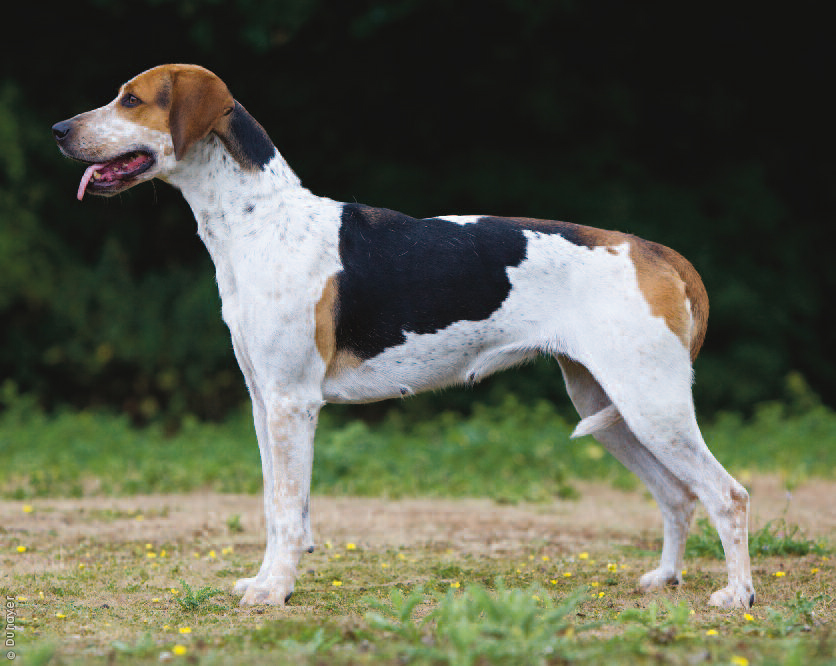
The Breed History
Careful record keeping by Masters of the Hounds allows the trace
back of pedigrees to around 1800. They were first imported to
America in 1738. The English foxhound is much larger and heavier
than the American counterpart. Breed origins are obscure but
may include Fox Terrier and Bloodhound. Many of these dogs are
registered in the hunting dog registry, the International Foxhunter
Studbook (kept by the British Master of Foxhounds Association)
rather than other mainstream registry bodies.
Breeding for Function
The old English tradition of mounted fox hunting led to the
breeding of exceptional pack dogs that could sound the scent for
the hunt to follow. Foxes were the primary prey.
Physical Characteristics
Height at Withers: female 23-25" (58-63.5 cm), male 25-27"
(63.5-69 cm).
Weight: 55-75 lb (25-34 kg).
Coat: The haircoat lays flat and is short and dense with hard hair
texture. Colors are black and tan and white, tricolor or white and tan.
Longevity: 11-12 years.
Points of Conformation: The dog is square and moderate in all
proportions. The head is of a size to match the dog, with large nose,
the ears are set low and pendulous with moderate leather, and
often the tips are rounded (the distal segment is trimmed off). The
neck is long and not throaty, with slight arch. The thorax is deep
and the rib cage does not taper up caudally but extends well back.
Feet are round and toes are well knuckled up. Topline is level, and
the tail is carried gaily when alert. It tapers at the tip with a fringe
of hair (slight brush). Very straight legs, and a low ground-covering
gait characterize the breed.
Recognized Behavior Issues and Traits
Reported breed attributes include: Likes to be in a pack, good if
raised in a household and good with children if socialized early.
High activity, high exercise needs, and thus not well placed in
apartments. Low grooming needs, let loose in a fenced area only or
may run off after scents.
Needs mental stimulation and human contact if housed solo. Gets
along well with other dogs. Moderate barking tendency; also may
howl. Has a moderate shedding tendency. Still kept primarily for
hunting rather than as a house pet.
Normal Physiologic Variations
Pelger-Huet Anomaly: Autosomal recessive inherited blood
disorder causing neutrophils with round, oval, or bean-shaped
nuclei and only rare segmented nuclei. No obvious clinical effects
in affected dogs.
Drug Sensitivities
None reported
Inherited Diseases
Hip Dysplasia: Polygenically inherited trait causing degenerative
joint disease and hip arthritis. OFA reports 2.5% affected.
Elbow Dysplasia: Polygenically inherited trait causing elbow
arthritis. OFA reports a high incidence, but too few English
Foxhounds have been screened to determine an accurate frequency.
Patella Luxation: Polygenically inherited laxity of patellar ligaments,
causing luxation, lameness, and later degenerative joint disease.
Treat surgically if causing clinical signs. Too few English Foxhounds
have been screened by OFA to determine an accurate frequency.
Disease Predispositions
Hypothyroidism: Inherited autoimmune thyroiditis. 18.2% positive
for thyroid auto-antibodies based on testing at Michigan State
University. (Ave. for all breeds is 7.5%).
Leishmaniasis: This infectious disease is primarily diagnosed
in Foxhounds. It is not determined if this is due to a genetic or
environmental cause.
Deafness: Congenital deafness can be unilateral or bilateral.
Diagnosed by BAER testing.
Renal Amyloidosis: Multiple reported cases of kidney failure in
related English Foxhounds. Affected dogs have an acute onset of
kidney dysfunction, and die within one week. Histological findings
in the kidneys show the presence of both glomerular and interstitial
amyloid.
Ocular Disorders: Not enough English Foxhounds have had CERF
eye examinations to determine accurate frequencies for ocular
disorders.
Brachygnathism, Hound Ataxia, Prognathism, and Thrombopathia
are reported.
Isolated Case Studies
None reported.
Genetic Tests
Tests of Genotype: Direct test for coat color alleles is available
from VetGen.
Tests of Phenotype: Recommend hip and elbow radiographs,
thyroid profile including autoantibodies, patella evaluation, CERF
eye examination and cardiac evaluation.
Miscellaneous
- Breed name synonyms: Foxhound
- Registries: AKC, UKC, CKC, KCGB (Kennel Club of Great Britain),
ANKC (Australian National Kennel Club), NKC (National Kennel Club)
- AKC rank (year 2008): 157 (17 dogs registered)
- Internet resources: English Foxhound Club of America (AKC):
13007 Brandywine Rd.
Brandywine, MD 20613
Masters of Foxhounds Association of America:
www.mfha.com
Photo Gallery of Breed - English Foxhound - Dog Breed

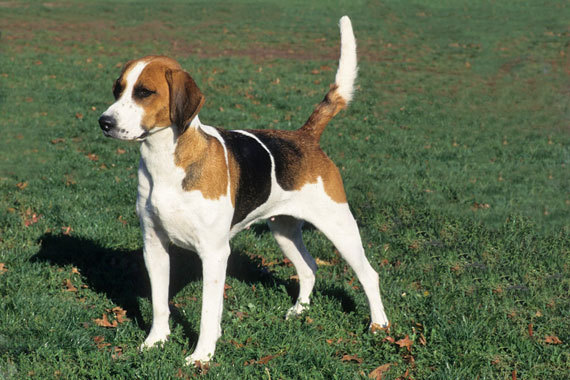


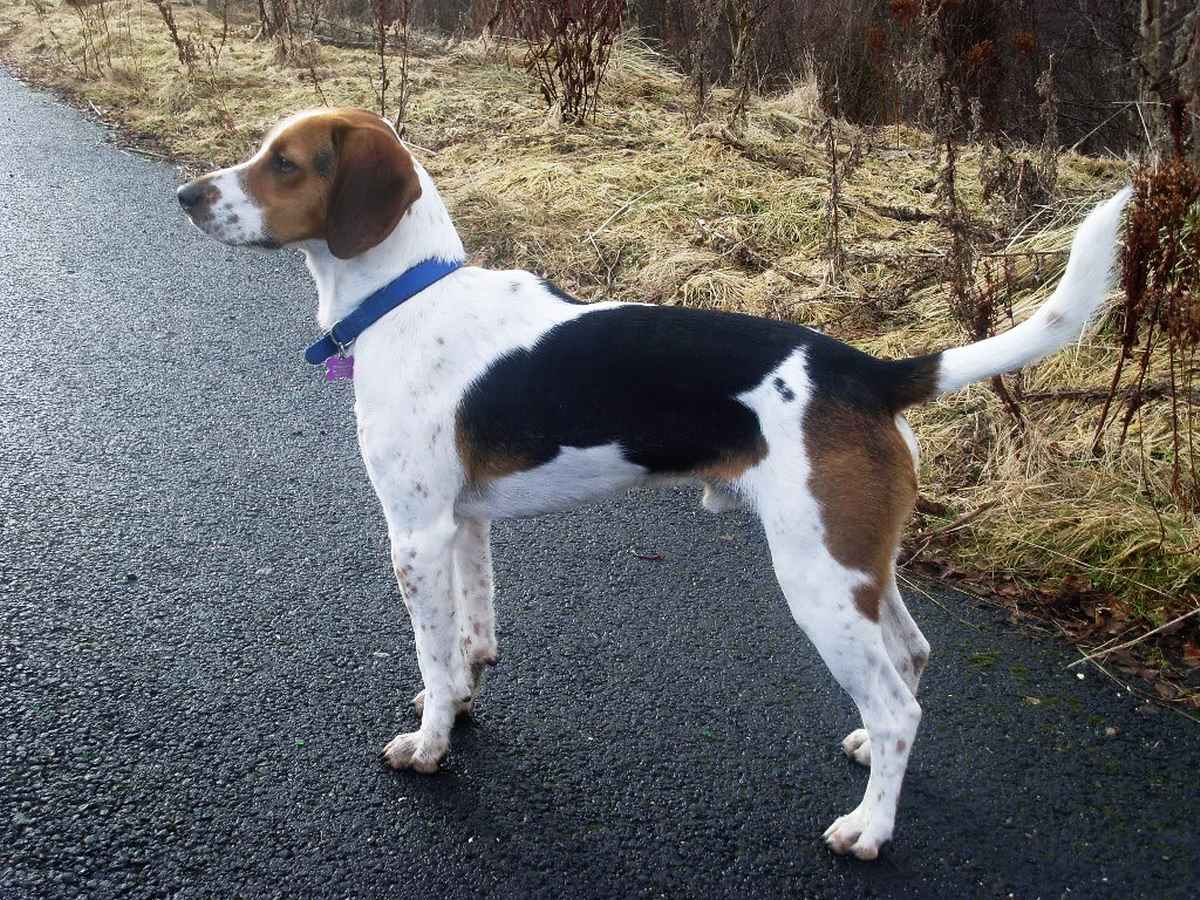
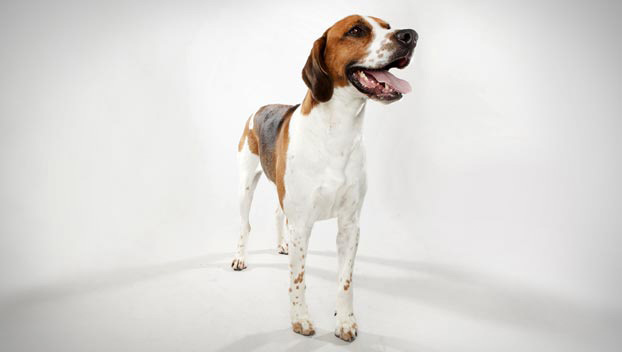
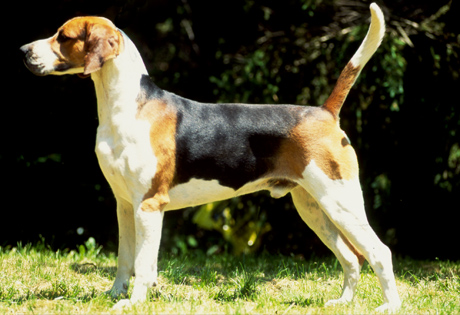

 Animalia Life
Animalia Life